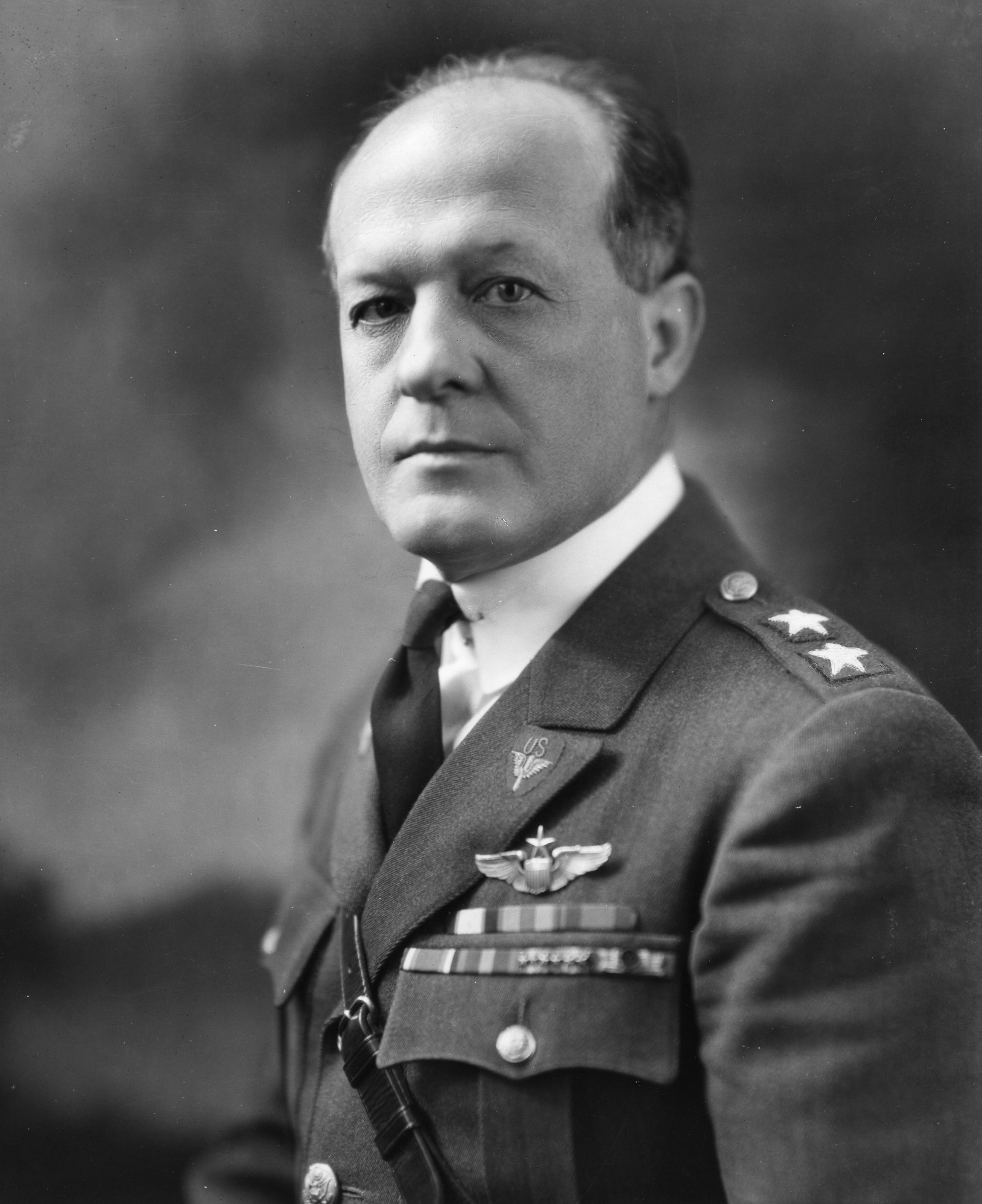Benjamin Foulois
| Benjamin Delahauf Foulois | |
|---|---|

Benjamin D. Foulois
|
|
| Born |
December 9, 1879 Washington, Connecticut |
| Died | April 25, 1967 (aged 87) Andrews Air Force Base |
| Place of burial | Washington, Connecticut |
| Allegiance |
|
| Service/branch |
|
| Years of service | 1898–1935 |
| Rank |
|
| Commands held | Chief of the Air Corps Chief of the Air Service, AEF 1st Aero Squadron |
| Battles/wars |
Spanish–American War Philippine–American War Pancho Villa Expedition World War I |
| Awards |
Distinguished Service Medal French Légion d'honneur (Commander) Order of the Crown of Italy (Grand Officer) Congressional Air Force Medal of Recognition |
Benjamin Delahauf Foulois (December 9, 1879 – April 25, 1967) was a United States Army general who learned to fly the first military planes purchased from the Wright Brothers. He became the first military aviator as an airship pilot, and achieved numerous other military aviation "firsts". He led strategic development of the Air Force in the United States.
Benjamin "Benny" Delahauf Foulois was born on December 9, 1879, in Washington, Connecticut, to a French-American pipe-fitter and a Boston-born nurse.
At age 18, he used his older brother’s birth certificate to enlist in the Army to support the Spanish–American War, but arrived in Puerto Rico just weeks before the armistice was signed. As an engineer, he fought off the rampant tropical diseases, and after five months, was shipped home and mustered out. On June 17, 1899, Foulois enlisted again, using his own name, as a private in the Regular Army and was assigned to the 19th Infantry, where he ultimately achieved the rank of first sergeant, with service in the Philippines on Luzon, Panay and Cebu. He was commissioned as a 2nd Lieutenant on July 9, 1901. Foulois returned to the United States in 1902 and transferred to the 17th Infantry. This regiment served in the Philippines from 1903 to 1905, and Foulois served in Manila, Cottabato and Mindanao, where he participated in engagements against the Lake Lanao Moros, successfully hunting down and defeating combatant tribal leaders, and as topographical officer for the regiment, participated in surveying and mapping expeditions.
Foulois attended the Infantry and Cavalry School at Fort Leavenworth, Kansas, from September 1905 to August 1906. In 1907, he married Ella Snyder van Horn, the daughter of Colonel James Judson Van Horn. Assigned to attend the Army Signal School in the class of 1906-1907, he was recalled to his regiment in September 1906 for duty with an expeditionary force in Cuba during the Second Occupation of Cuba. His experience in surveying in the Philippines led to reassignment to the chief engineer of the force to perform military mapping. He was commissioned as a 1st lieutenant in the Signal Corps on April 30, 1908, assigned to the office of the Army's Chief Signal Officer (CSO), Brig. Gen. James Allen, and sent to complete Signal School, which he did in July 1908. His final thesis was The Tactical and Strategical Value of Dirigible Balloons and Aerodynamical Flying Machines, within which he demonstrated prescience in such statements as this:
...
Wikipedia
